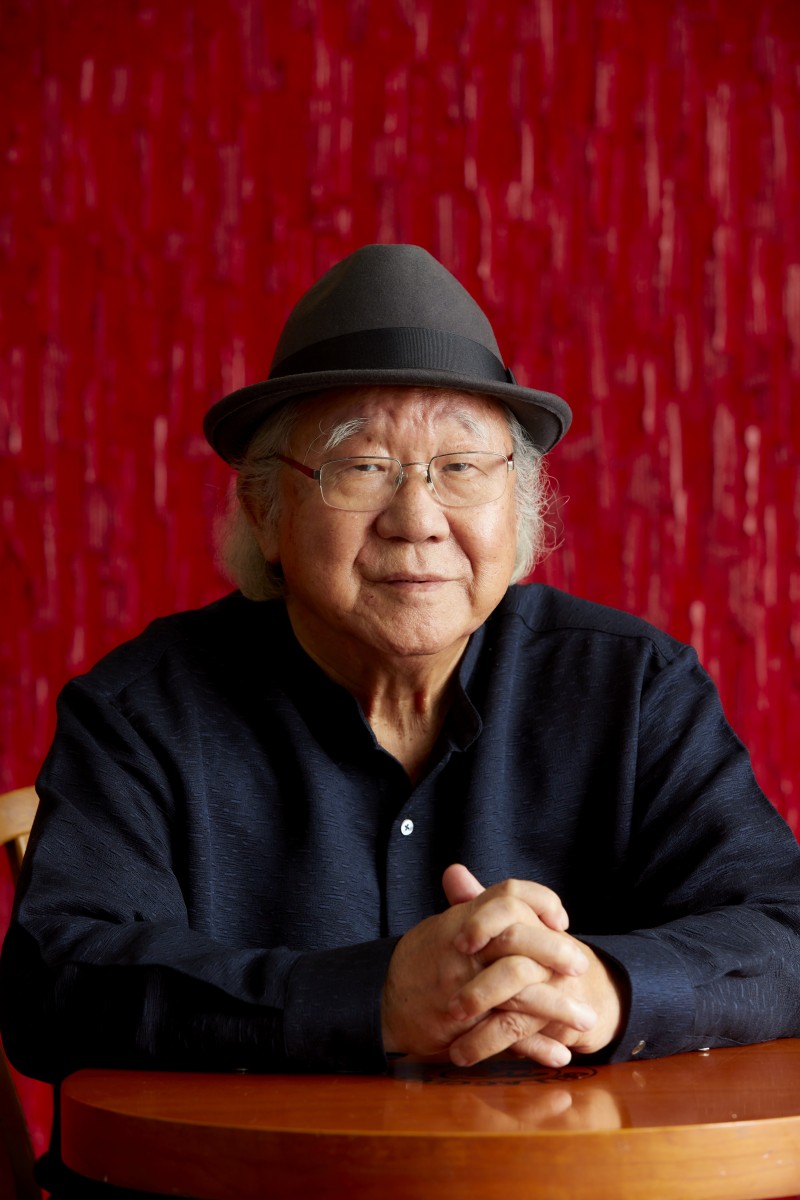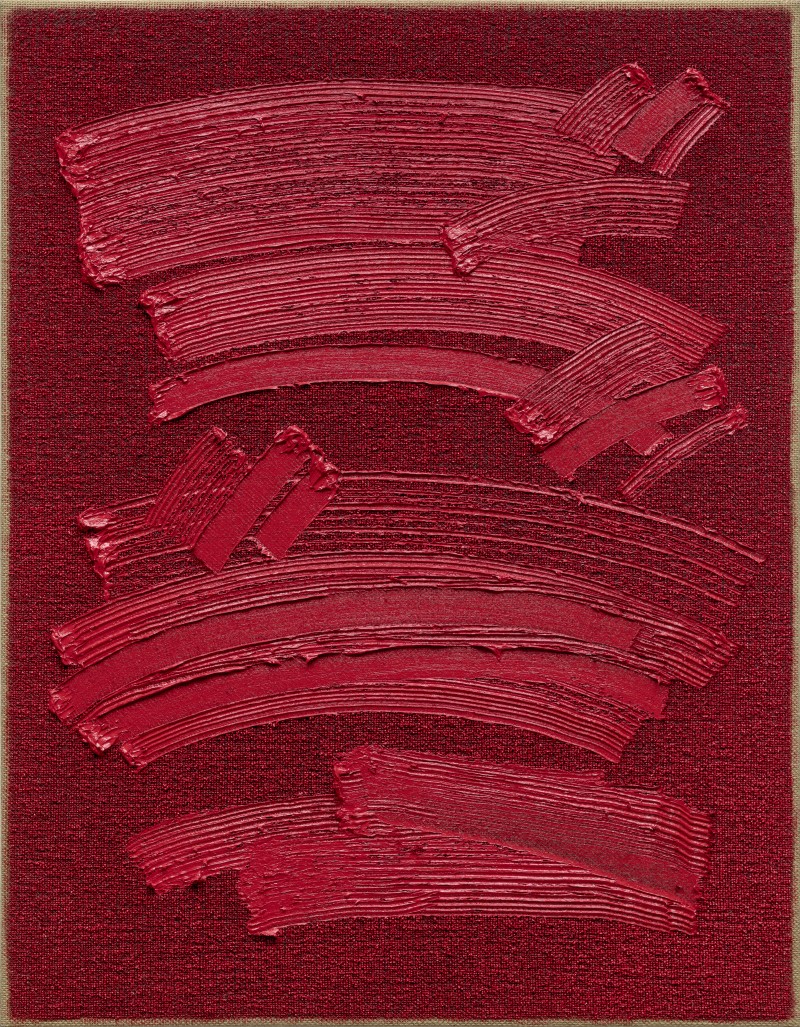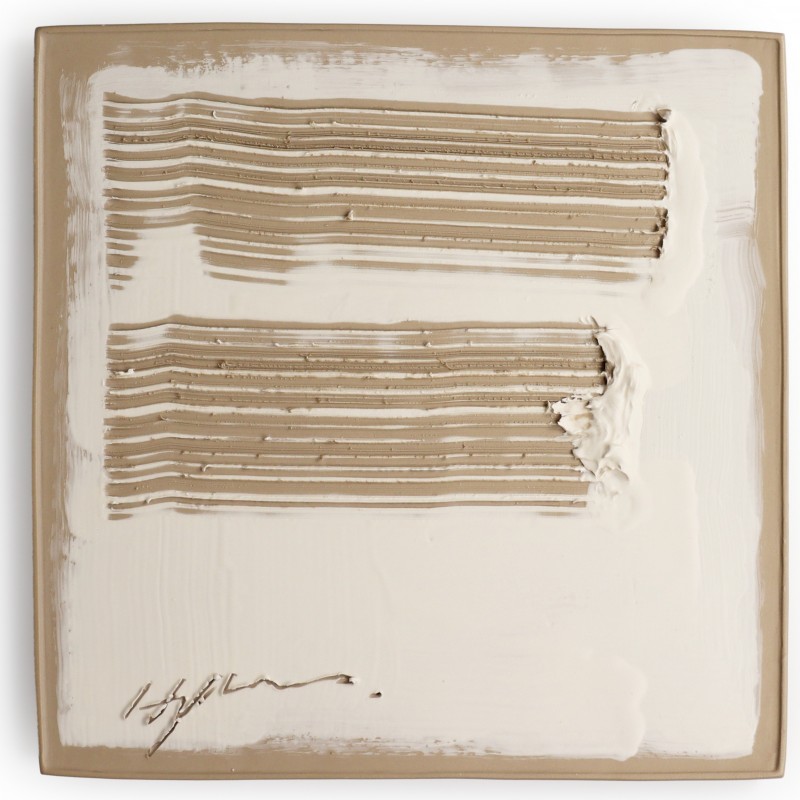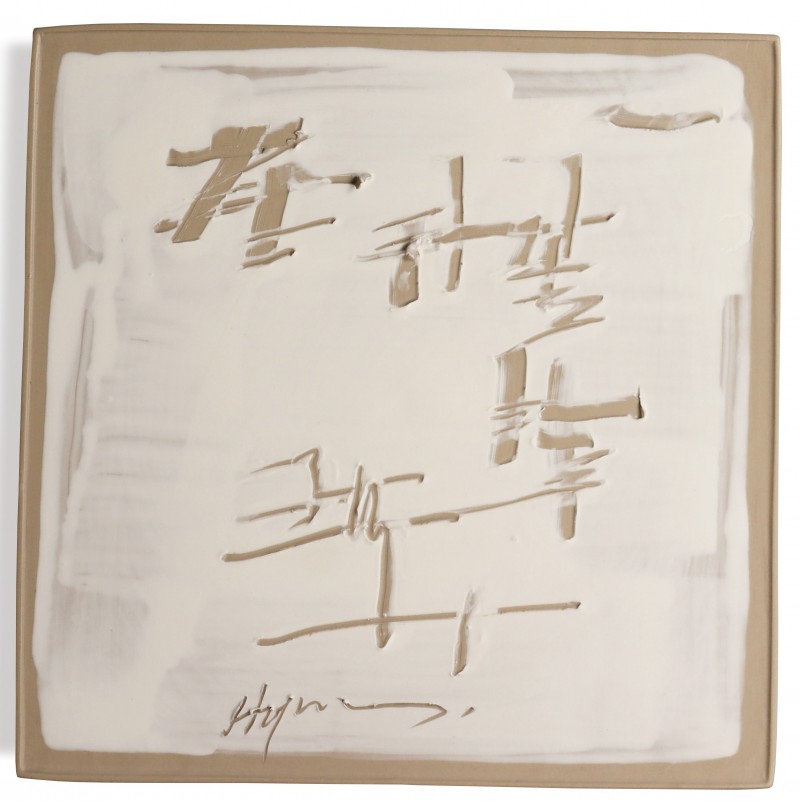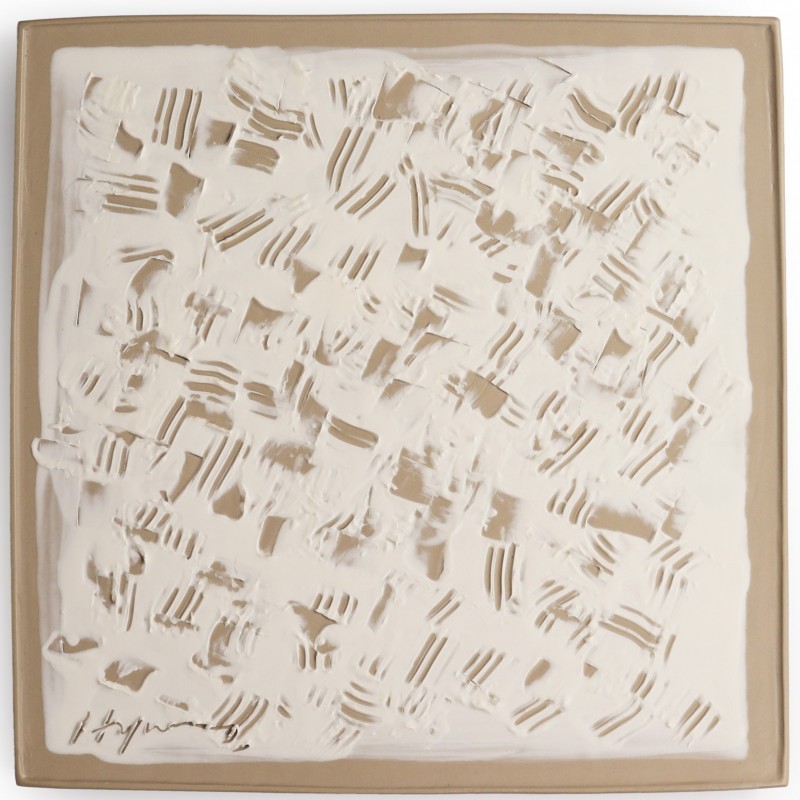Ha Chong-Hyun
Ha Chong-Hyun (b.1935, Korean), a leading member of Korea’s Dansaekhwa movement, gained prominence combining painting traditions from both the East and the West. Working with muted earth tones on burlap and hemp canvases and challenging the strict delineation between sculpture, painting, and performance, Ha was instrumental in defining Korean modernism. His early interest in unorthodox materials including barbed wire, newsprint, and scrap lumber was a direct response to the context of postwar Korea, and today the artist continues to balance aesthetic concerns and an innovative technique within a historical milieu. In Conjunction series, a lifelong project that he began in 1974, Ha celebrates the painterly process by combining physical labor and mindful action into powerful abstract compositions. Rather than applying paint to the front of the canvas, the artist begins by applying it to the backside after which he forces it through the canvas onto the fabric’s front. This process is referred to as bae-ap-bub in Korean, which translates as “back pressure method.” In applying the paint verso, the wet medium records the dense texture of the woven ground as it is pushed through, thereby alluding to what is typically hidden. Pairing his bae-ap-bub technique with the utilization of the tools he made himself to lay down thick impasto lines, Ha Chong-Hyun transforms each painting into a visceral three-dimensional surface.
하종현(b.1935)은 1974년 〈접합〉 연작을 시작하면서 캔버스의 양면을 활용하는 실험적인 작업방식을 꾸준히 탐구해왔다. 특히 캔버스 뒷면에서 앞면으로 물감을 밀어내는 독창적인 배압(背押)법은 화면의 앞뒤를 구분하는 기존 관행에 대한 작가의 비판적인 관점을 반영한다. 또한 그가 캔버스로 사용하는 마대는 한국전쟁 이후 미군의 구호물자를 담았던 포대자루 같은 비(非)미술적, 비(非)전통적인 매체로써 작가가 청년기를 보낸 시절의 어려웠던 시대상과 일상성을 투영하면서 작가 특유의 마티에르(matière) 기법을 만들어낸다. 입체성을 평면성으로 전환하는 그의 작업은 최근 색채에 물질성과 양감을 더하는 실험으로 확장된다. 그는 마대와 어우러질 수 있는 자연스러운 색을 활용하고, 이를 작품의 어법으로 치환시키는 과정을 작업의 핵심으로 삼는다.

